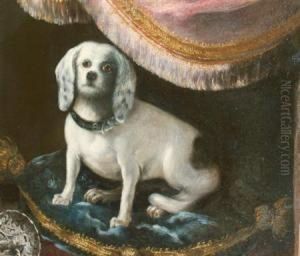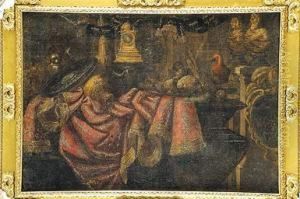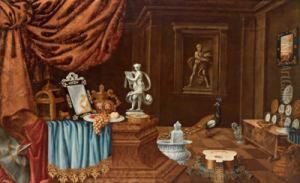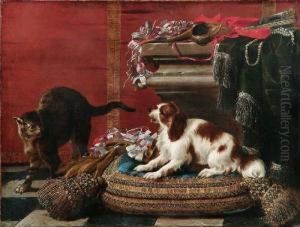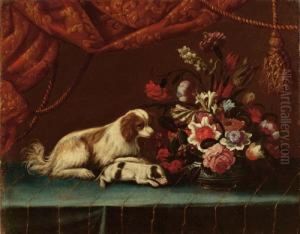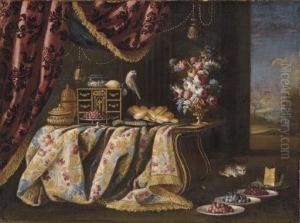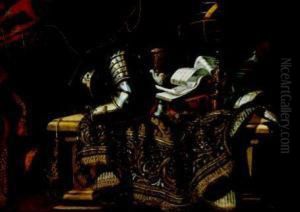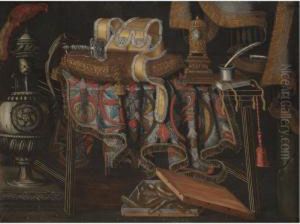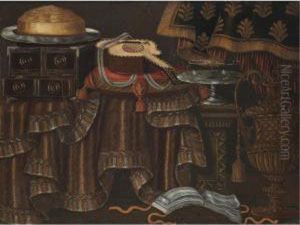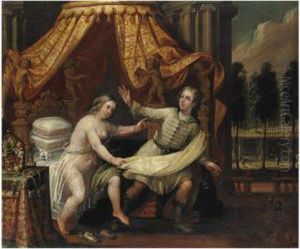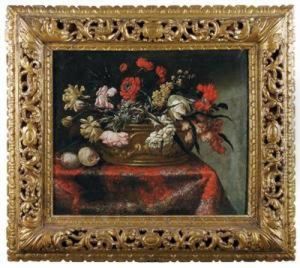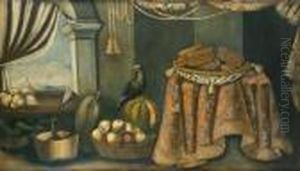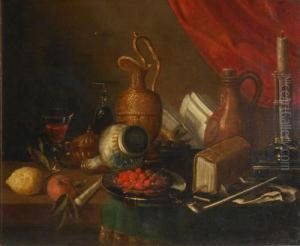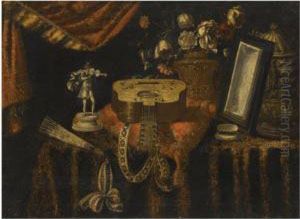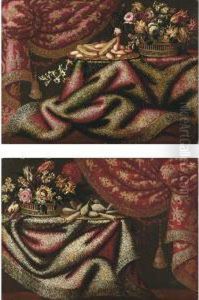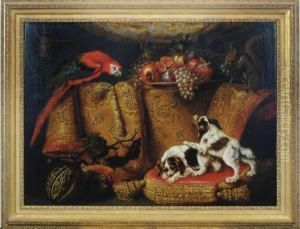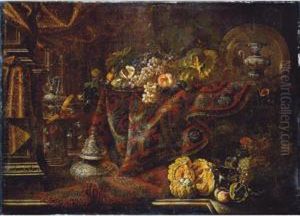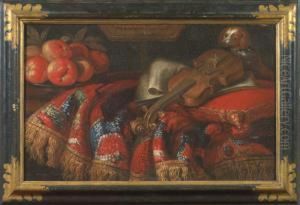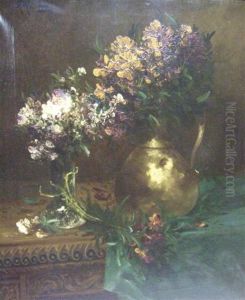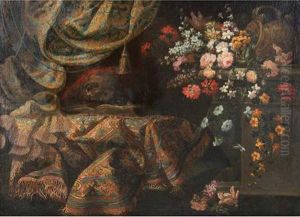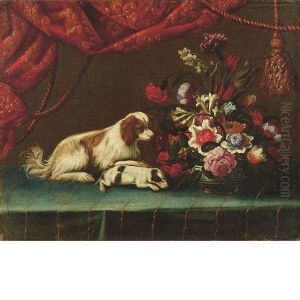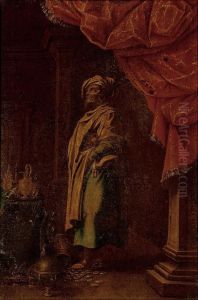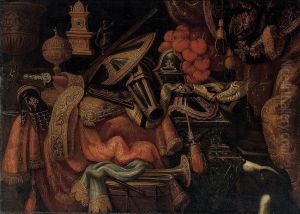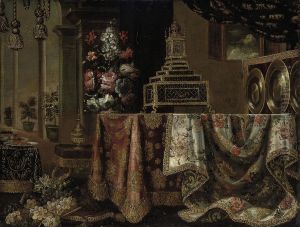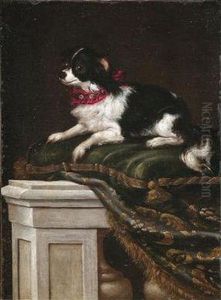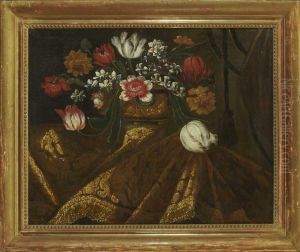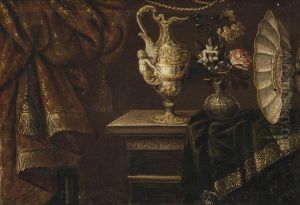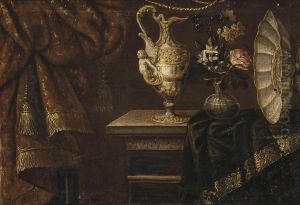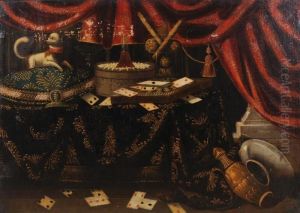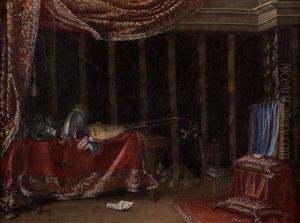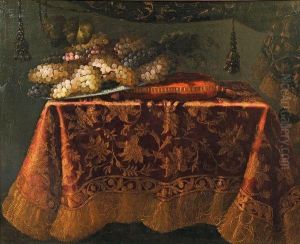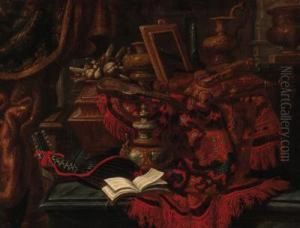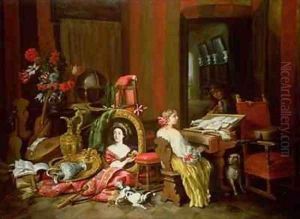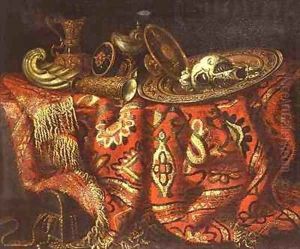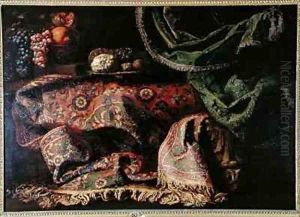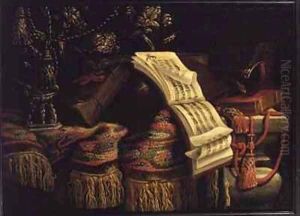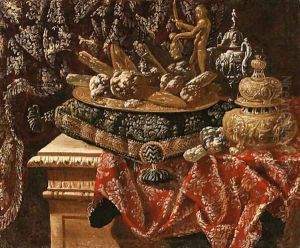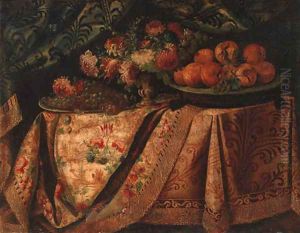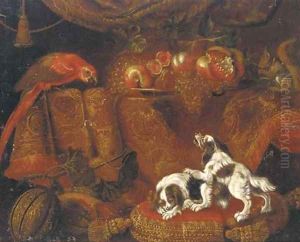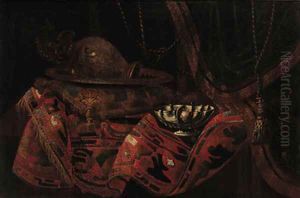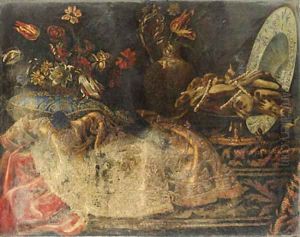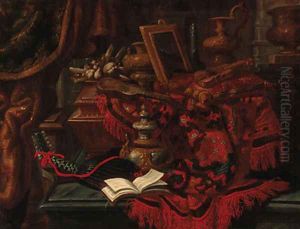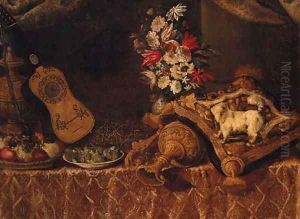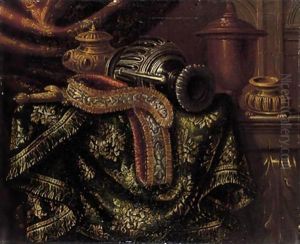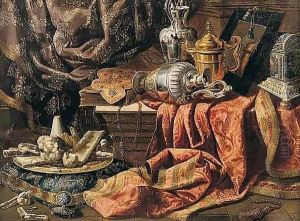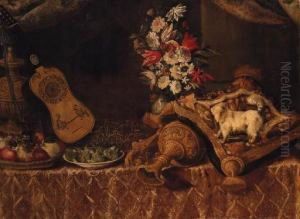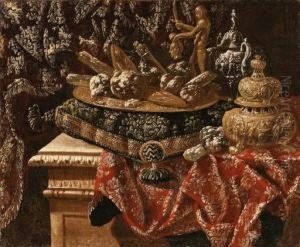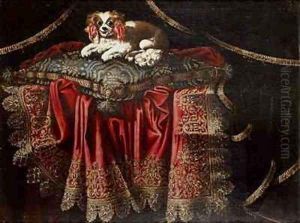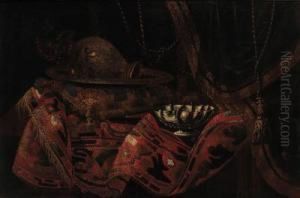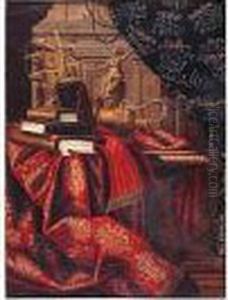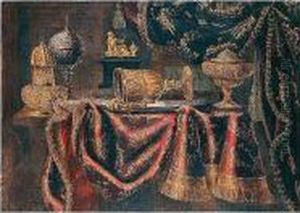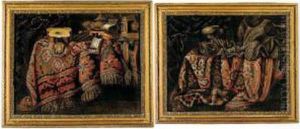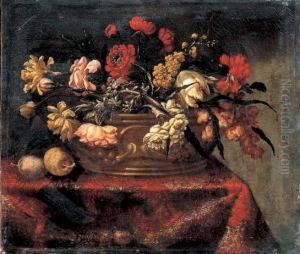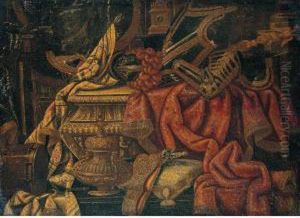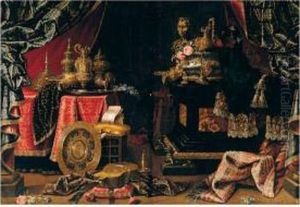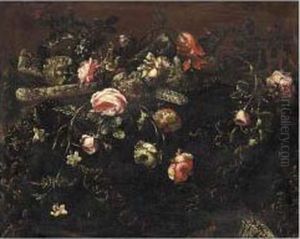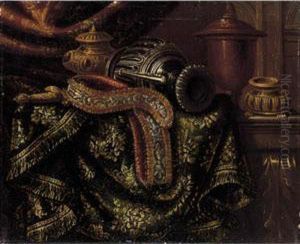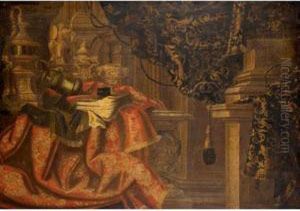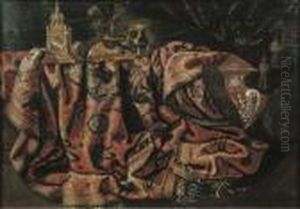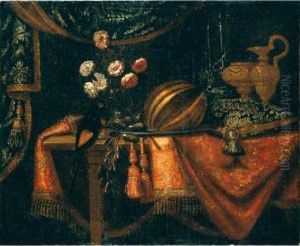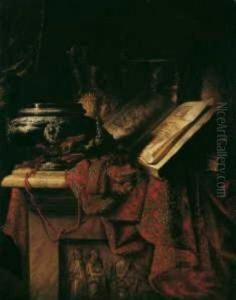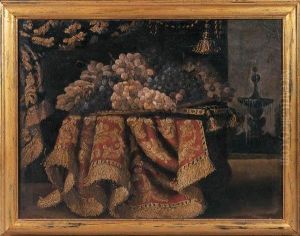Francesco (Il Maltese) Fieravino Paintings
Francesco Fieravino, also known as Il Maltese due to his Maltese origin, was a Baroque painter active during the 17th century. While his exact birth and death dates are not precisely known, it is generally believed that he was born around the year 1600 and died around 1650. Fieravino's work primarily centered on still life paintings, a genre that gained significant popularity during his time.
Fieravino's artistic style was influenced by the Roman and Neapolitan still-life traditions, which were known for their rich detail, vivid colors, and intricate compositions that often included flowers, fruits, and objects arranged on tables or in niches. His work was particularly noted for the detailed textures and the realistic depiction of surfaces and materials, ranging from the translucence of glass to the reflective properties of metal.
Despite being called Il Maltese, Fieravino spent most of his career in Italy, where he became part of the vibrant artistic community. He was especially active in Rome, where still life painting was experiencing a renaissance of sorts, thanks in part to the patronage of the Catholic Church and the growing demand from the burgeoning middle class for art to adorn their homes.
Fieravino's paintings often feature a combination of naturalistic detail and allegorical elements, with some works hinting at vanitas themes—a reminder of the transience of life and the futility of pleasure. His compositions are characterized by a masterful use of light and shadow, creating a sense of depth and volume that adds to the lifelike quality of his subjects.
Unfortunately, like many artists of his time, Fieravino did not achieve widespread fame during his lifetime, and much of his life's details have been lost to history. However, his surviving works continue to be appreciated for their beauty and technical skill, and they provide valuable insight into the still-life genre of the Baroque period. His paintings can be found in various art collections and have been studied for their contribution to the development of still-life painting in Europe.
